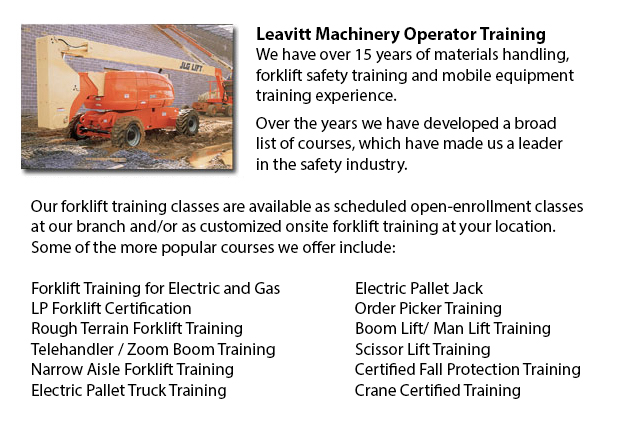
Aerial Platform Training Glendale - Aerial lift trucks can accommodate many odd jobs involving high and tricky reaching spaces. Normally utilized to carry out routine repair in buildings with elevated ceilings, prune tree branches, elevate heavy shelving units or fix telephone lines. A ladder could also be utilized for many of the aforementioned projects, although aerial platform lifts offer more security and stability when correctly used.
There are a variety of distinctive versions of aerial forklifts existing, each being able to perform slightly unique jobs. Painters will usually use a scissor lift platform, which is able to be utilized to get in touch with the 2nd story of buildings. The scissor aerial platform lifts use criss-cross braces to stretch and lengthen upwards. There is a table attached to the top of the braces that rises simultaneously as the criss-cross braces elevate.
Container trucks and cherry pickers are a different kind of aerial lift. They possess a bucket platform on top of an elongated arm. As this arm unfolds, the attached platform rises. Forklifts use a pronged arm that rises upwards as the lever is moved. Boom hoists have a hydraulic arm which extends outward and hoists the platform. All of these aerial hoists call for special training to operate.
Training programs presented through Occupational Safety & Health Association, acknowledged also as OSHA, cover safety steps, machine operation, upkeep and inspection and device load capacities. Successful completion of these training courses earns a special certified certificate. Only properly licensed individuals who have OSHA operating licenses should drive aerial lifts. The Occupational Safety & Health Organization has developed guidelines to uphold safety and prevent injury when utilizing aerial lifts. Common sense rules such as not using this piece of equipment to give rides and making sure all tires on aerial lift trucks are braced in order to hinder machine tipping are referred to within the rules.
Unfortunately, statistics illustrate that over 20 operators die each year while working with aerial lift trucks and 8% of those are commercial painters. The majority of these incidents are due to improper tire bracing and the lift falling over; for that reason a lot of of these deaths had been preventable. Operators should ensure that all wheels are locked and braces as a critical safety precaution to prevent the machine from toppling over.
Additional rules involve marking the surrounding area of the device in an obvious manner to safeguard passers-by and to guarantee they do not come too close to the operating machine. It is imperative to ensure that there are also 10 feet of clearance between any power lines and the aerial hoist. Operators of this equipment are also highly recommended to always wear the proper safety harness while up in the air.
-
Aerial Lift Train the Trainer Glendale
Aerial Lift Train the Trainer Glendale - The Aerial Lifts Train the Trainer Certification Program will teach trainers how to effectively train operators in safe industrial mobile machine operation. Trainers are given in-depth instruction on aerial li... More -
Forklift License Glendale
Forklift License Glendale - In North America, acquiring a forklift license or forklift certification involves hands-on and classroom training. Regulatory control over certification, training and license for powered industrial truck operators falls un... More -
Telehandler Certification Glendale
Telehandler Certification Glendale - Telehandler certification programs are both for operators who have some experience driving a typical forklift and for individuals with no experience. The real-world training provided by these courses produces grad... More -
Operator Safety Training and Re-Qualification Training and In-House Instructor Training in Glendale
Forklifts are used in almost all warehouse operations and in boat yards and in industrial construction sites. The reach feature of a forklift is a very important component utilized in a variety of applications like for example when a shelving system... More -
Manlift Training Glendale
Manlift Training Glendale - Different manlift training programs include the content and review of manlift devices. An important portion of the program is the practicum where students show their practical ability and knowledge to safely operate a manl... More -
Crane Certification Glendale
Crane Certification Glendale - The Crane Certification Program consists of the industry suggested subject matter which will teach the safe and efficient operation of cranes. The individual would train in the following: how to identify cranes and thei... More -
Loader Ticket Glendale
Loader Ticket Glendale - Gehl articulated loaders have been made to suit practically every condition. They offer optimal maneuverability and great traction due to a heavy-duty oscillating joint that provides 45-degree rotating angles right and left,... More -
Crane Ticket Glendale
Crane Ticket Glendale - The new version of a crane could be either simple or complex, and cranes vary based on their use. Mobile cranes, for instance are rather simple. A telescopic boom or steel truss mounts its movable platform. A system of levers... More

Forklift Training Glendale
TOLL FREE: 1-888-254-6157
Glendale, Arizona
forkliftcertificationglendale.com
Email Us
About Us


